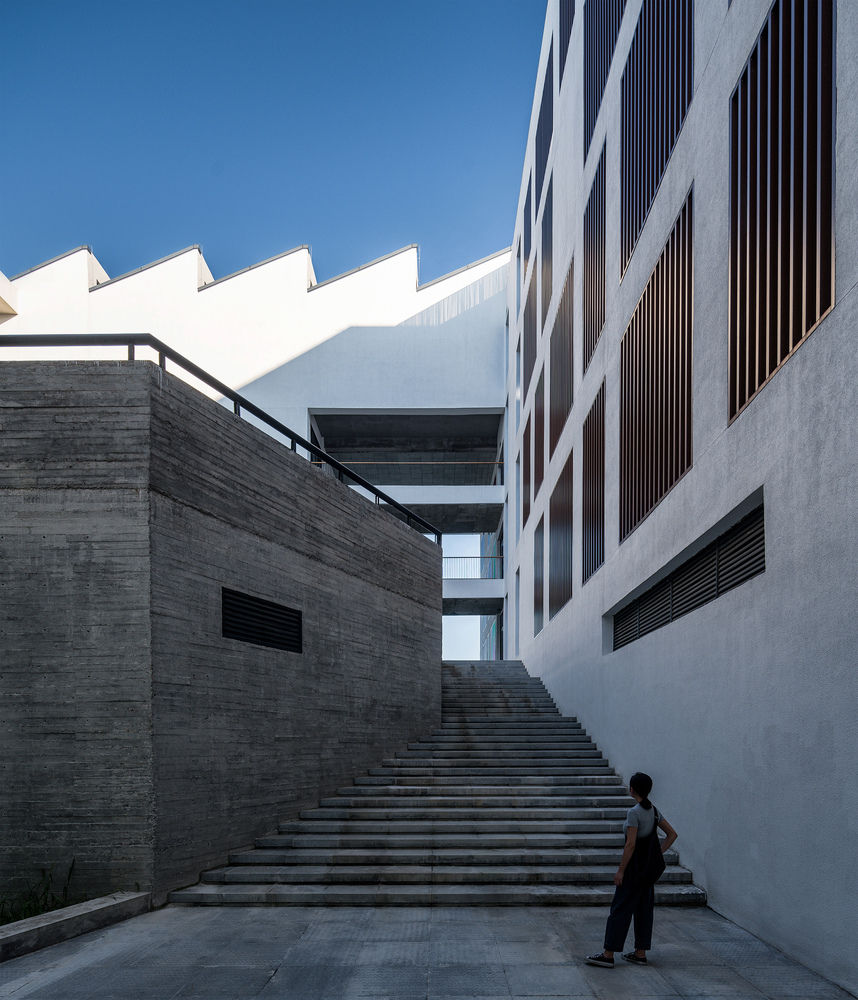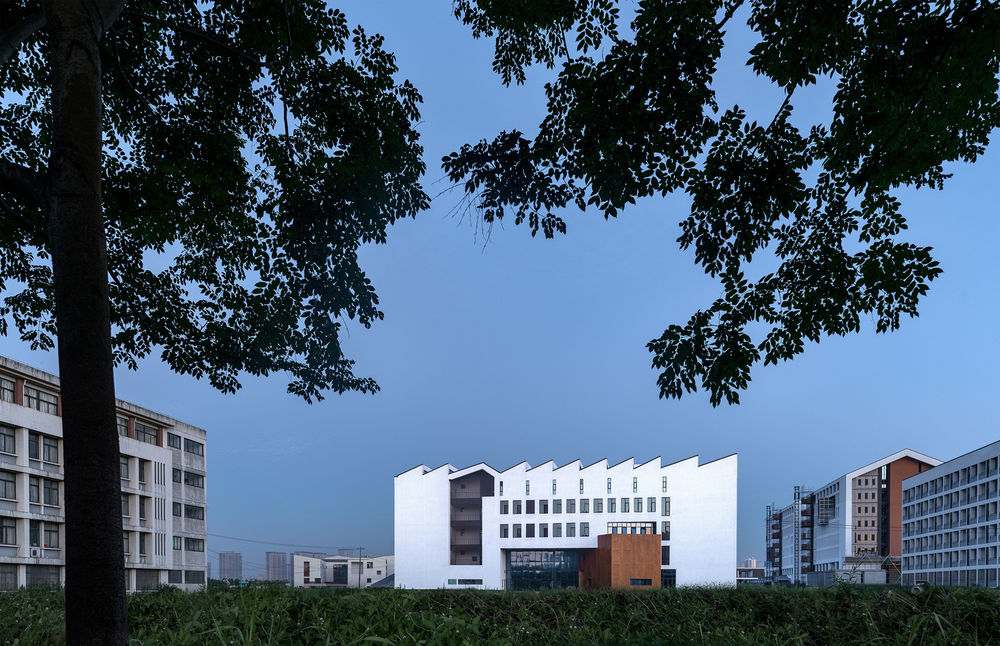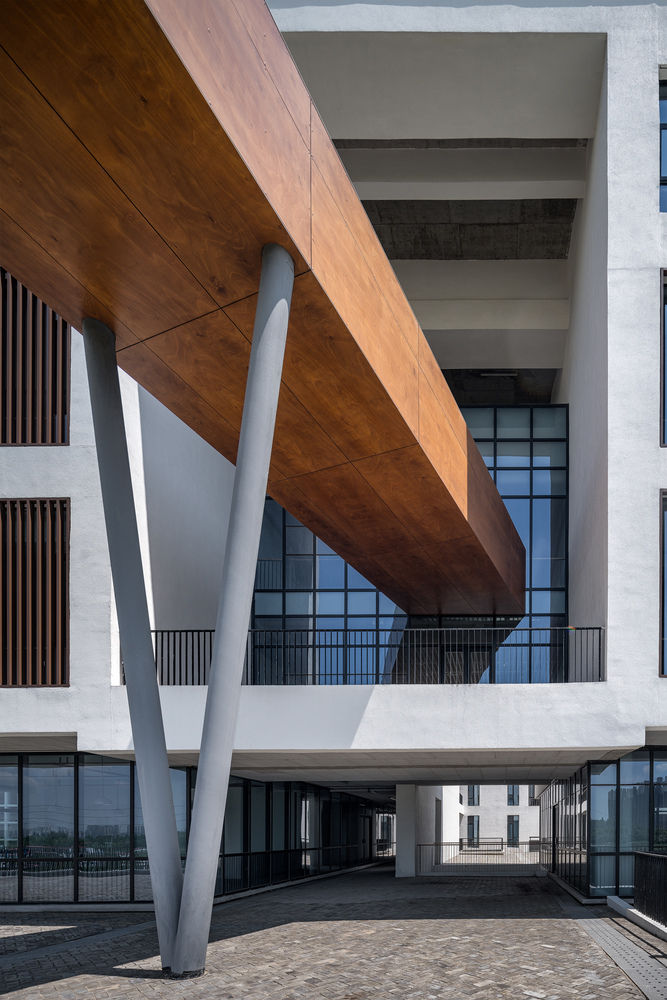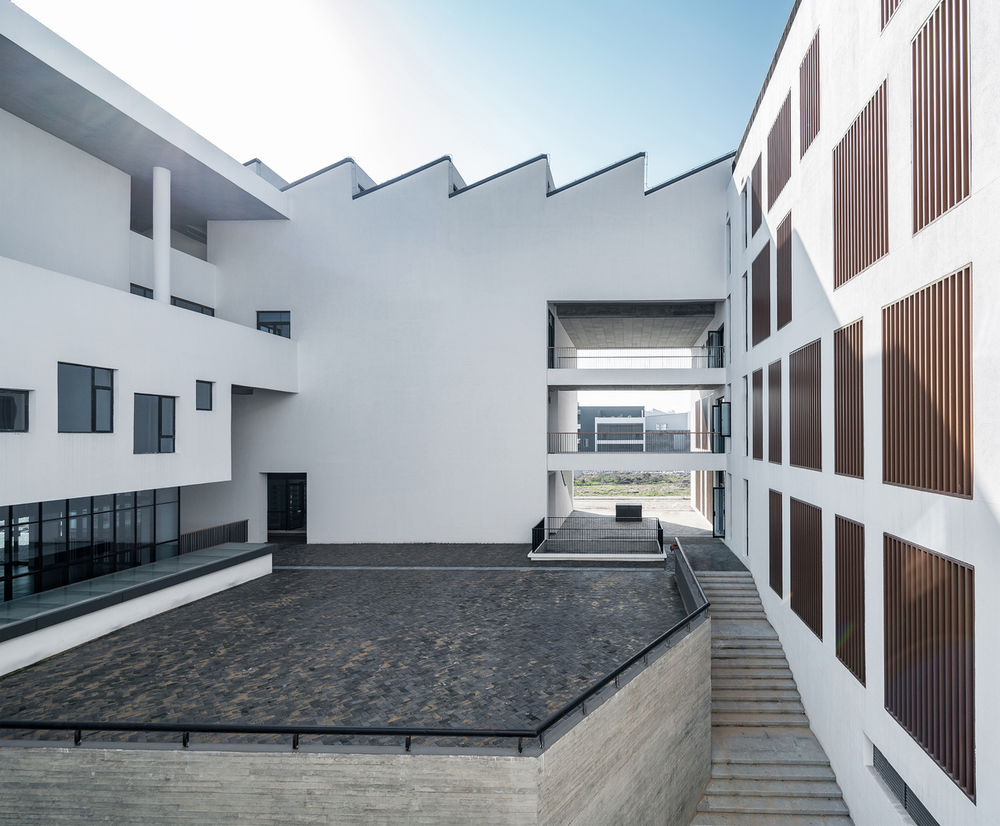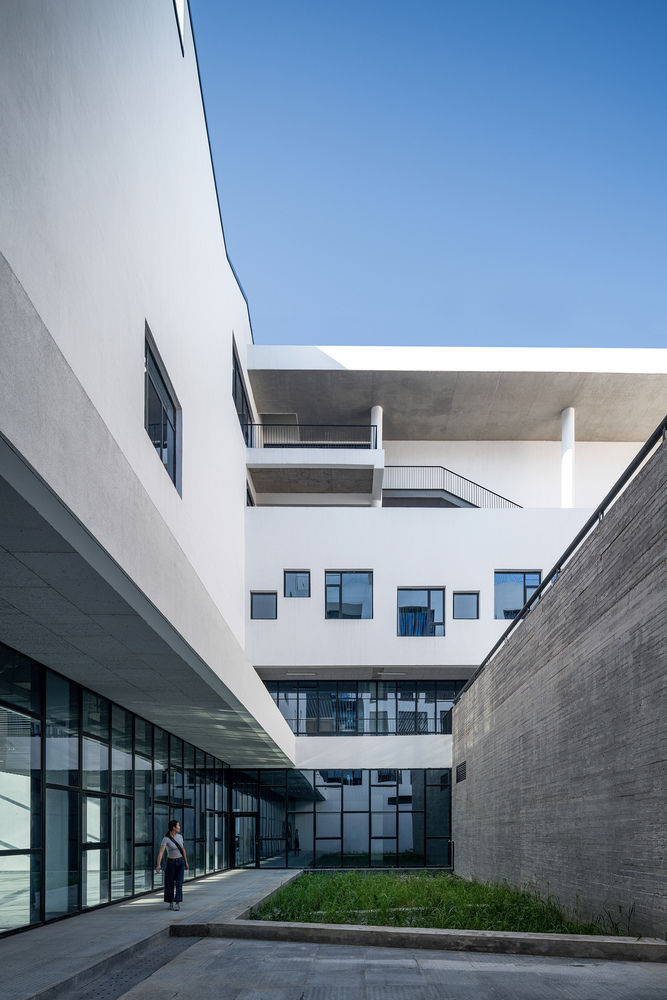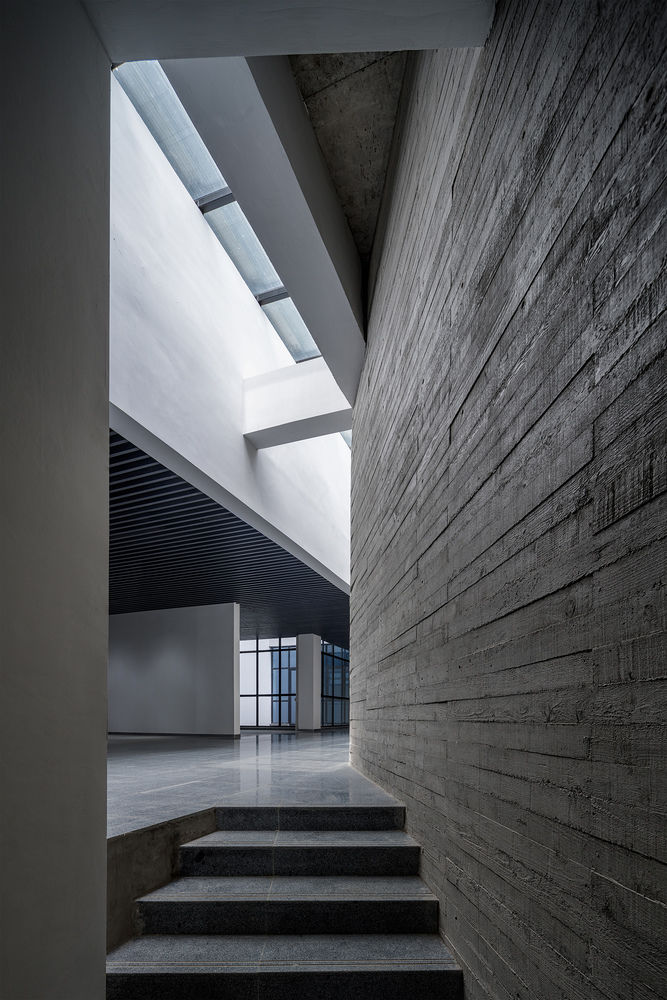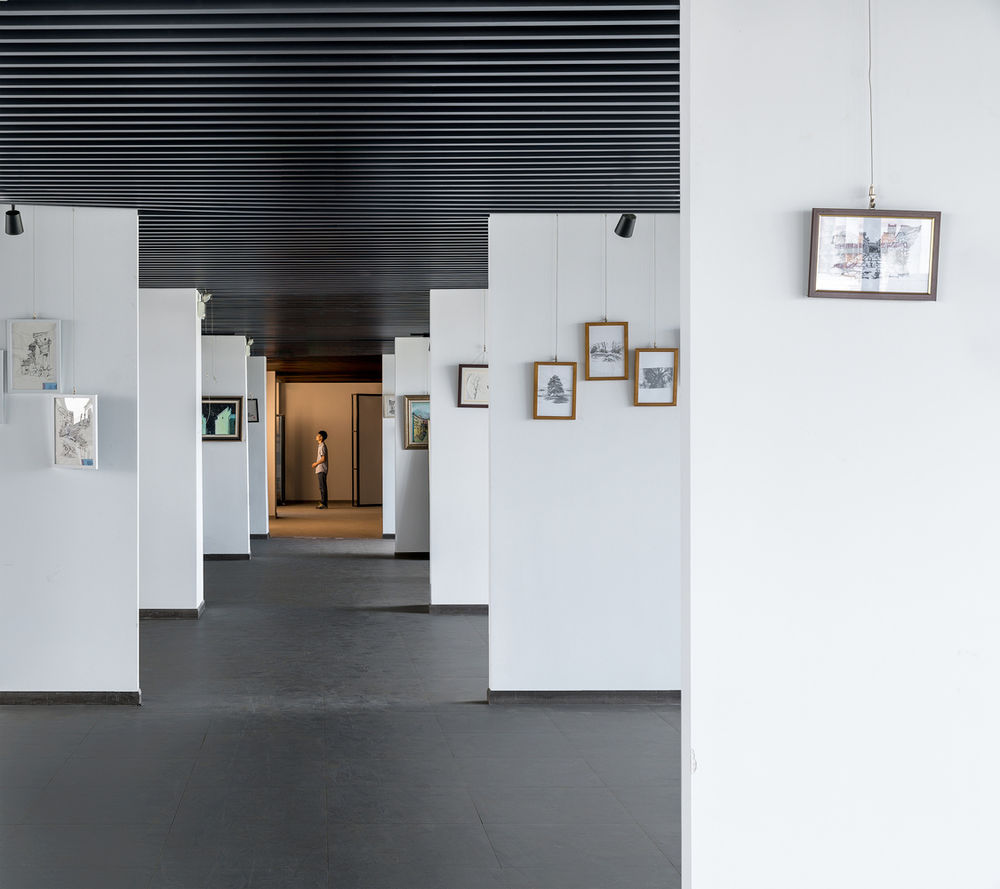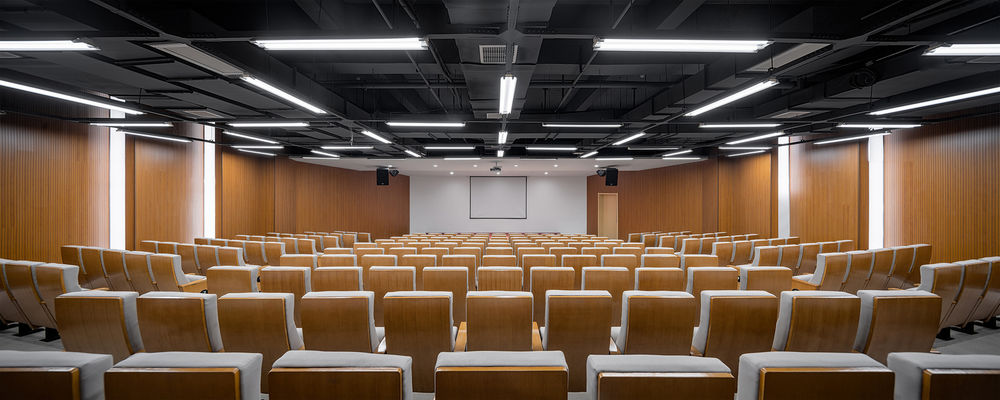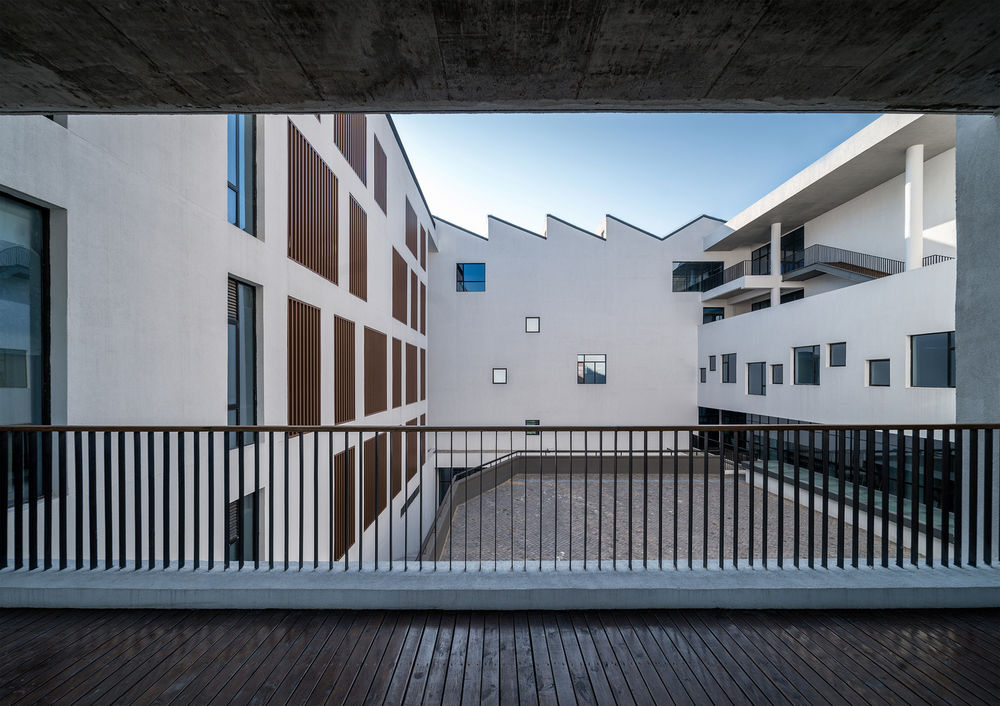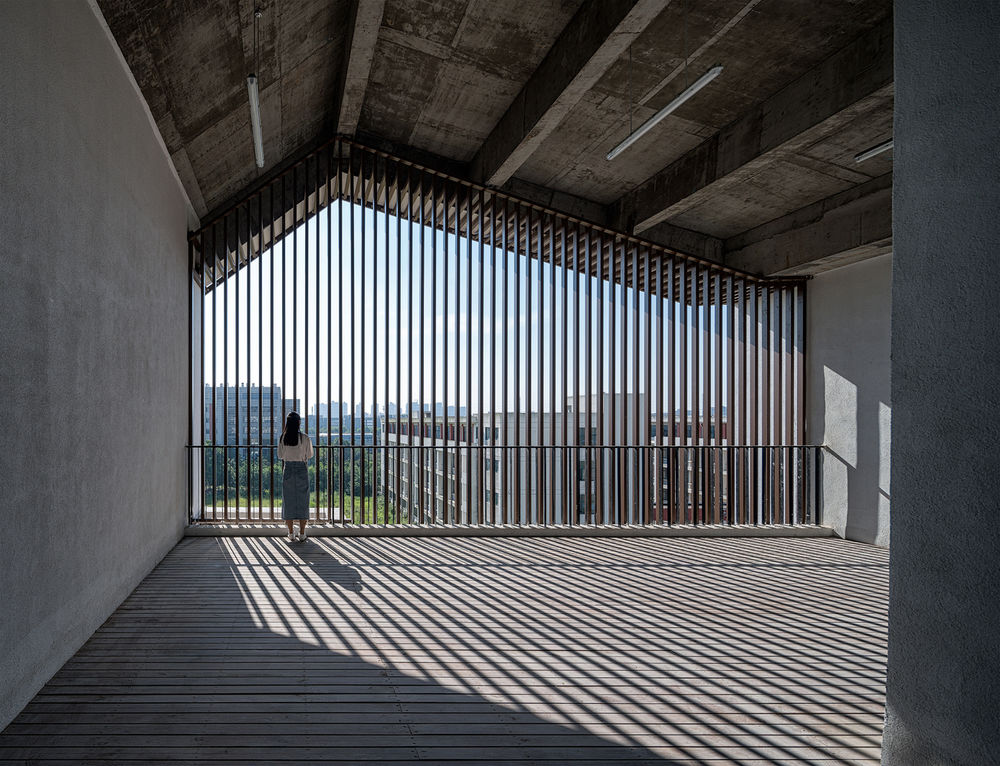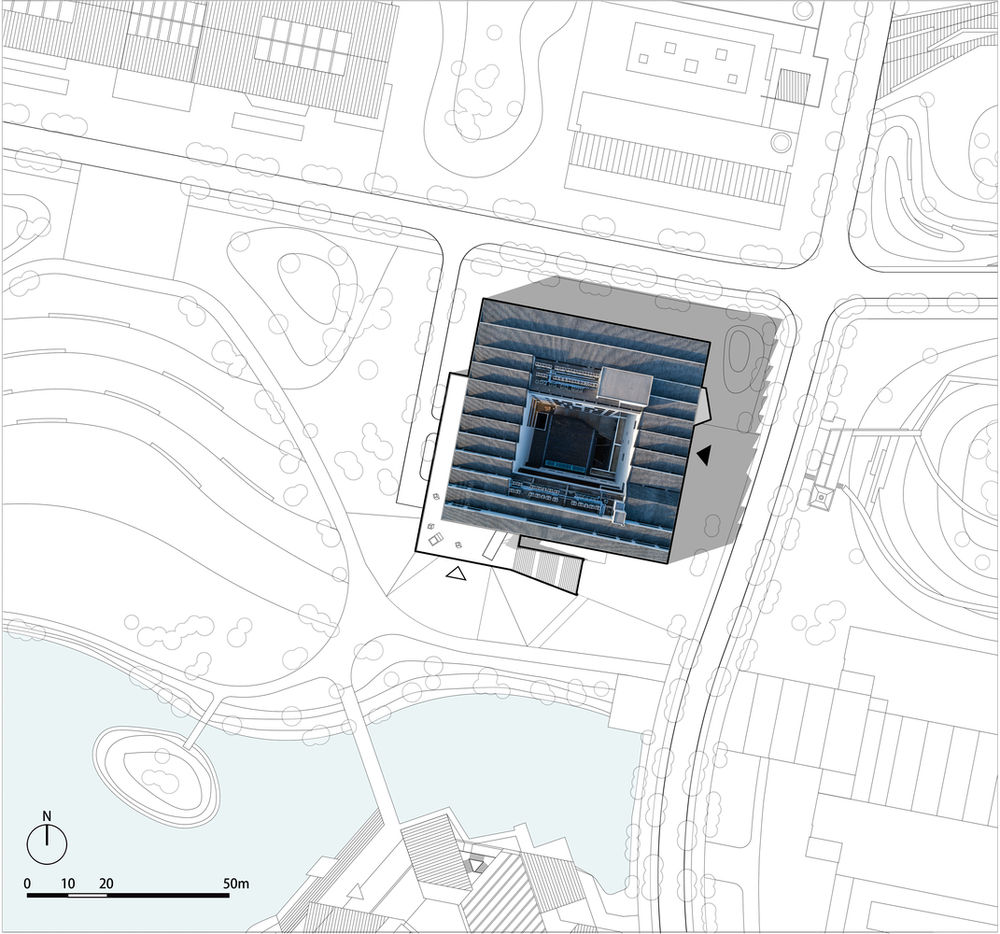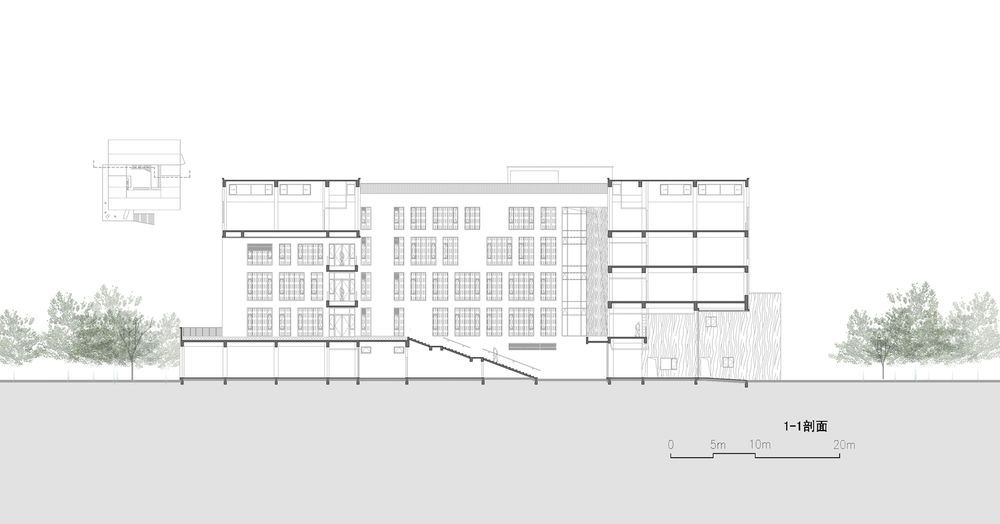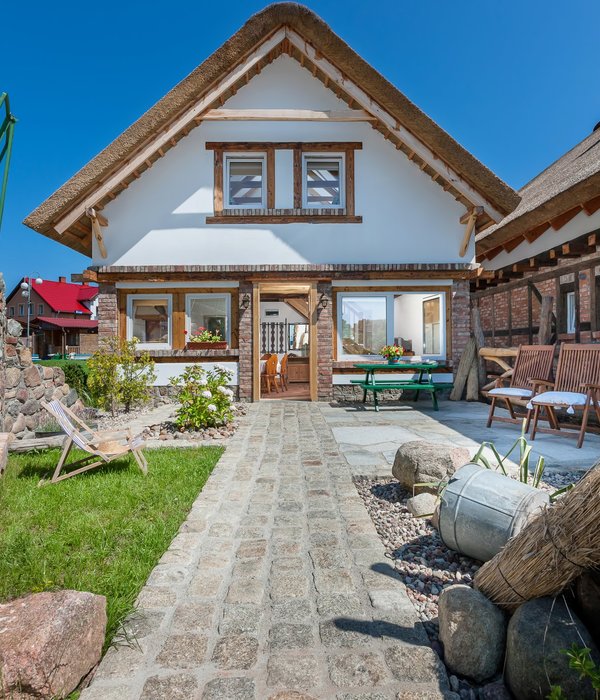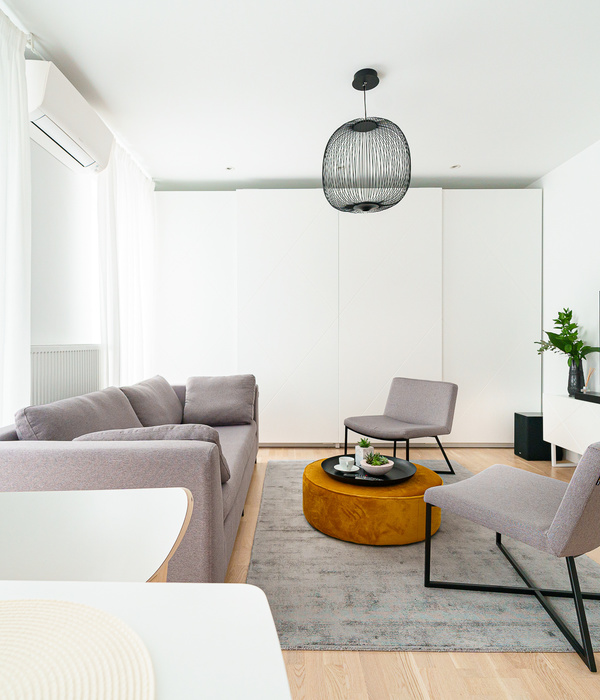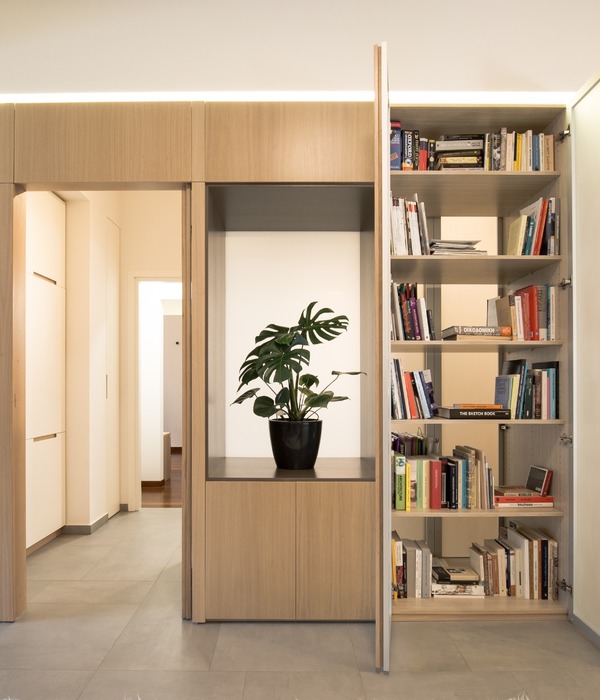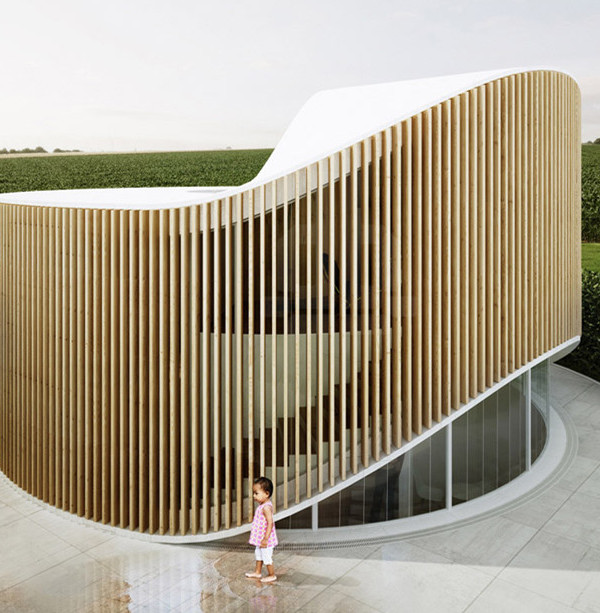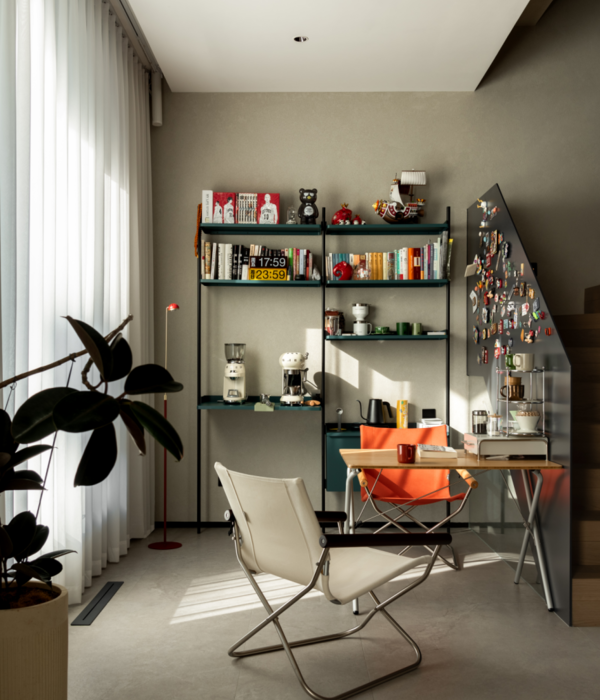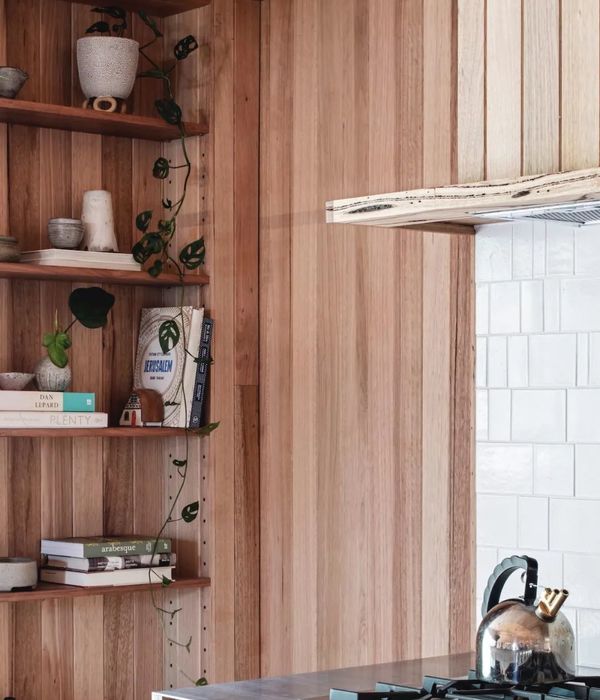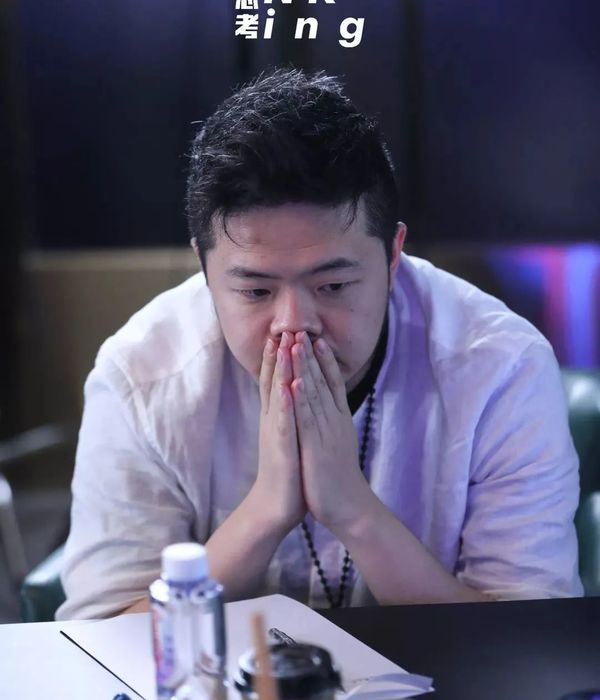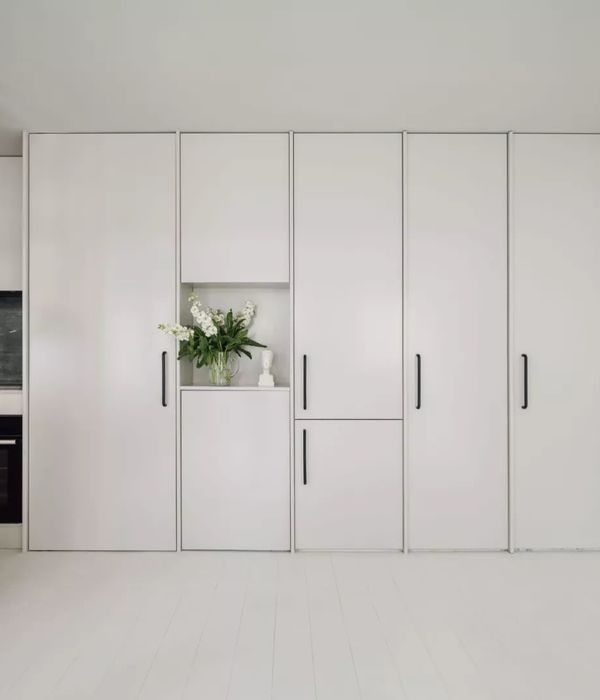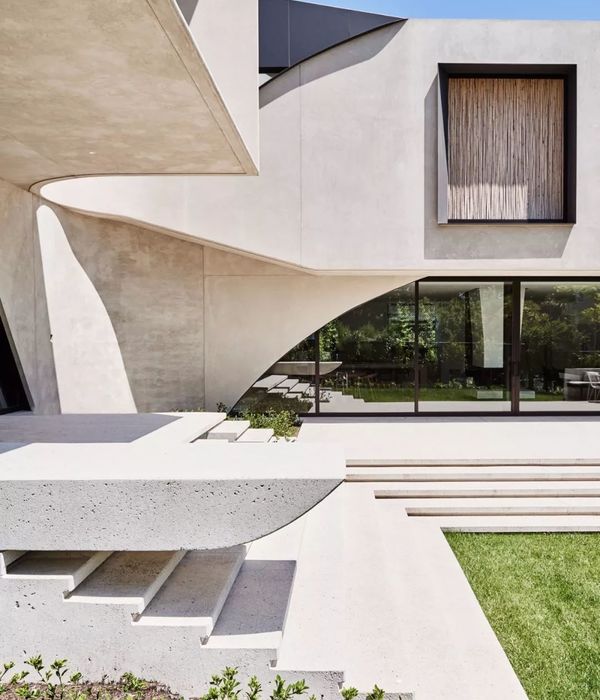AHUAC Fine Arts Building | 内敛世界的艺术探索
Architects:TJAD
Area :15370 m²
Year :2018
Photographs :Qingshan Wu
Structure : Gang Jin, Shixin Jiang, Xi Li
MEP : Yiqing Chen, Jiajue Shen, Liu Yang
Design Team : Qiang Chen, Wensheng Wang, Jun Zhou, Ye Wen, Jianru Chen, Mingxu Zhou, Qingtao Bai
City : Hefei Shi
Country : China
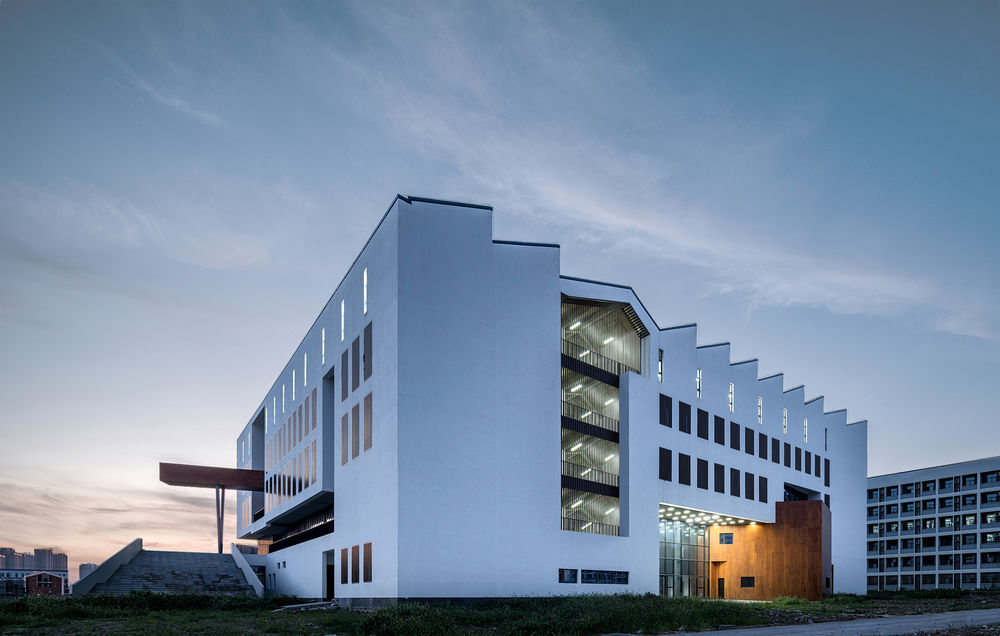
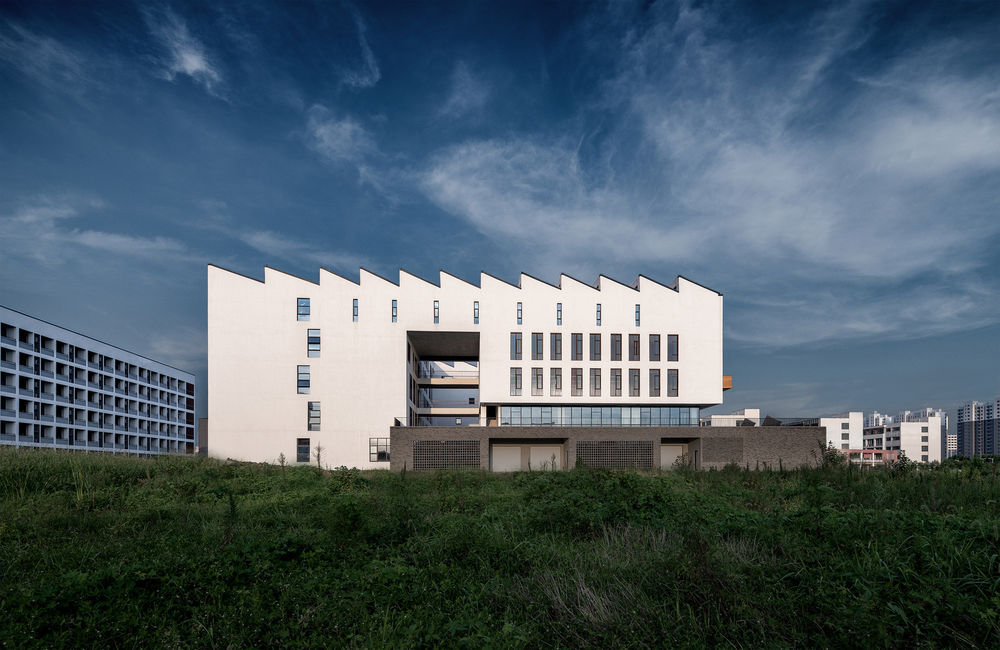
The high wall and quiet courtyard of Hui-style architecture create an introverted world which becomes a medium for the communication between people and nature. The campus of AHUAC adopts the theme of “new Hui-style art settlements” and explores the characteristics of art colleges and regional architectures. Fine arts building is adjacent to the main axis of the campus, surrounded by wonderful natural landscape.
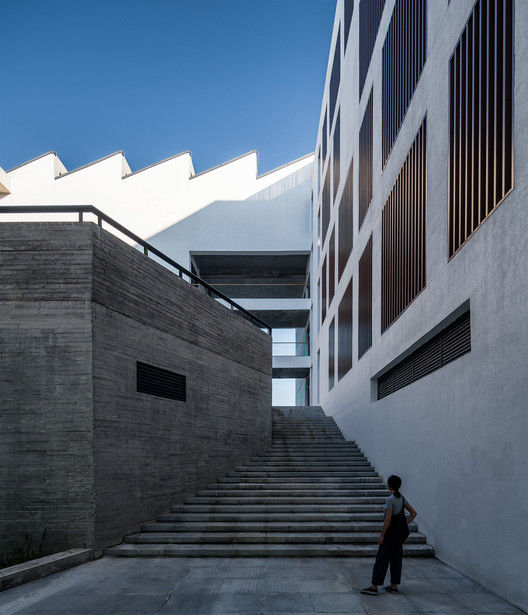
Enclosed and Open CourtyardThe building adopts the traditional square layout of enclosed courtyard with a huge opening in each direction to create a “windmill” configuration. It dissolves the disadvantages caused by the negative angles in the conventional plan, as well enables indoor and outdoor spaces to have a more active interaction, giving the static space the sense of dynamics.
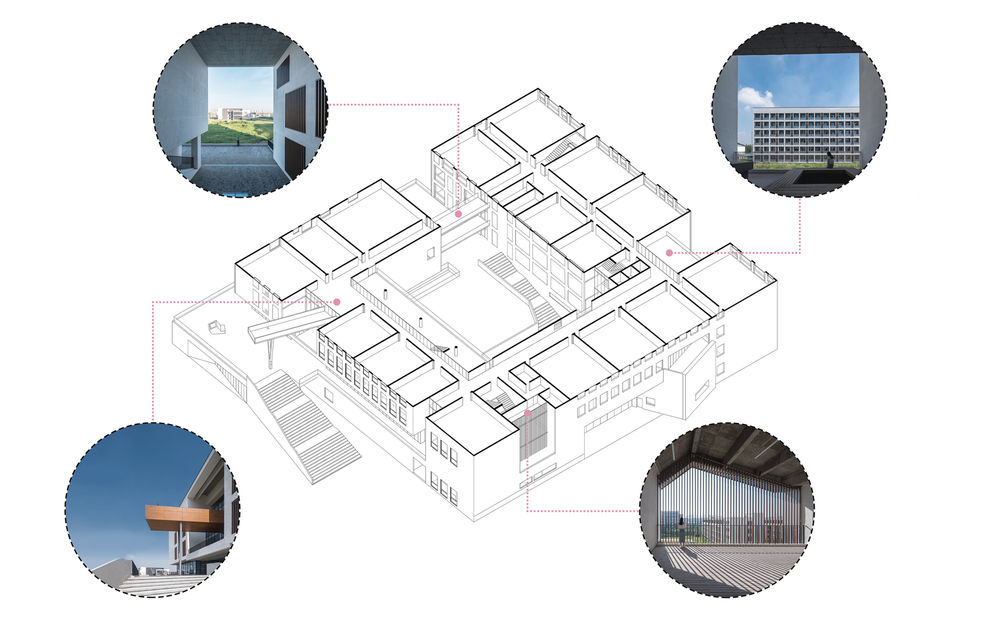
A cantilever bridge extends from the southern opening at the 4th floor. The lightness and opening of the bridge makes a dramatic contrast with the thickness and enclosed courtyard, challenging people’s sensory experience. Leaning on the railing and overlooking, you can enjoy the dreamlike atmosphere and the surrounding scenery.
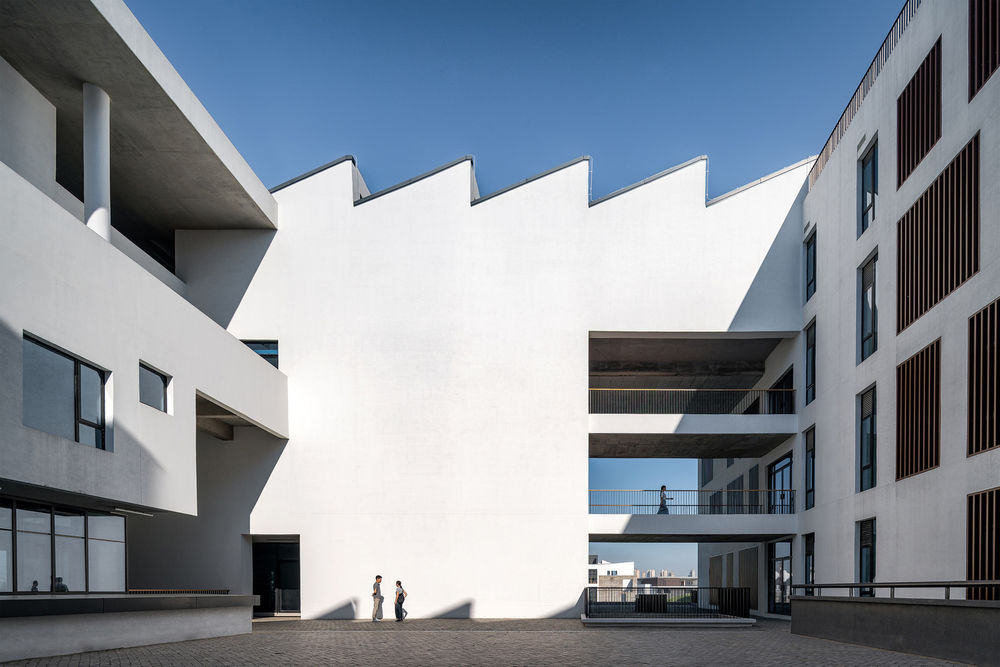

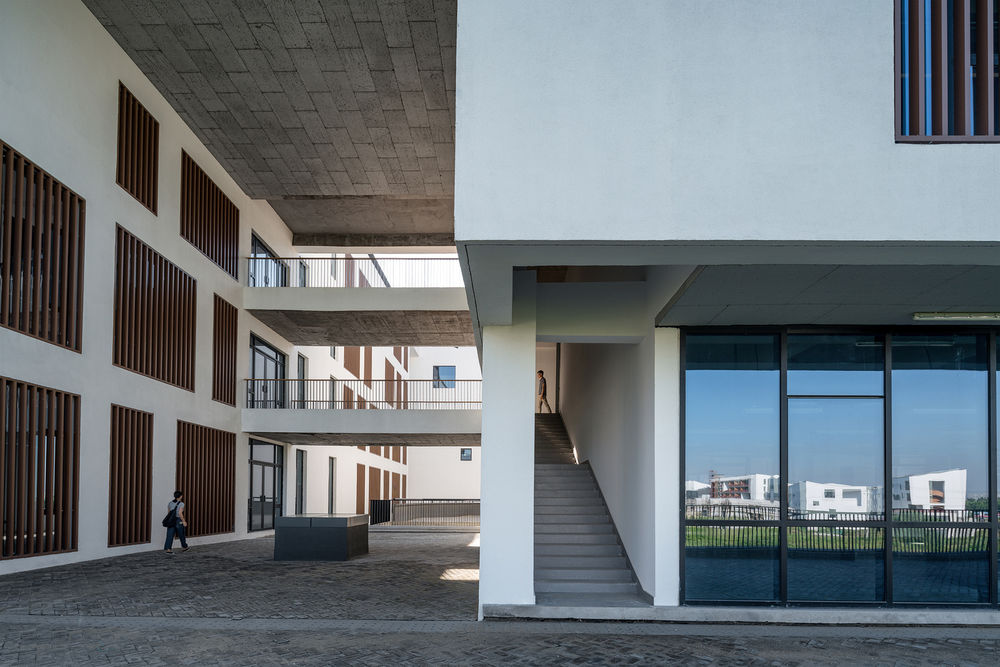
The Secondary Scale of the CourtyardBy placing the lecture hall into the courtyard, the five-storey-high courtyard is divided into two independent yet connected spaces——a small entrance courtyard enclosed by the lecture hall and the roof terrace of the lecture hall. The terrace extends from the inner courtyard and becomes a large base, strengthening the connection between the courtyard and surroundings.
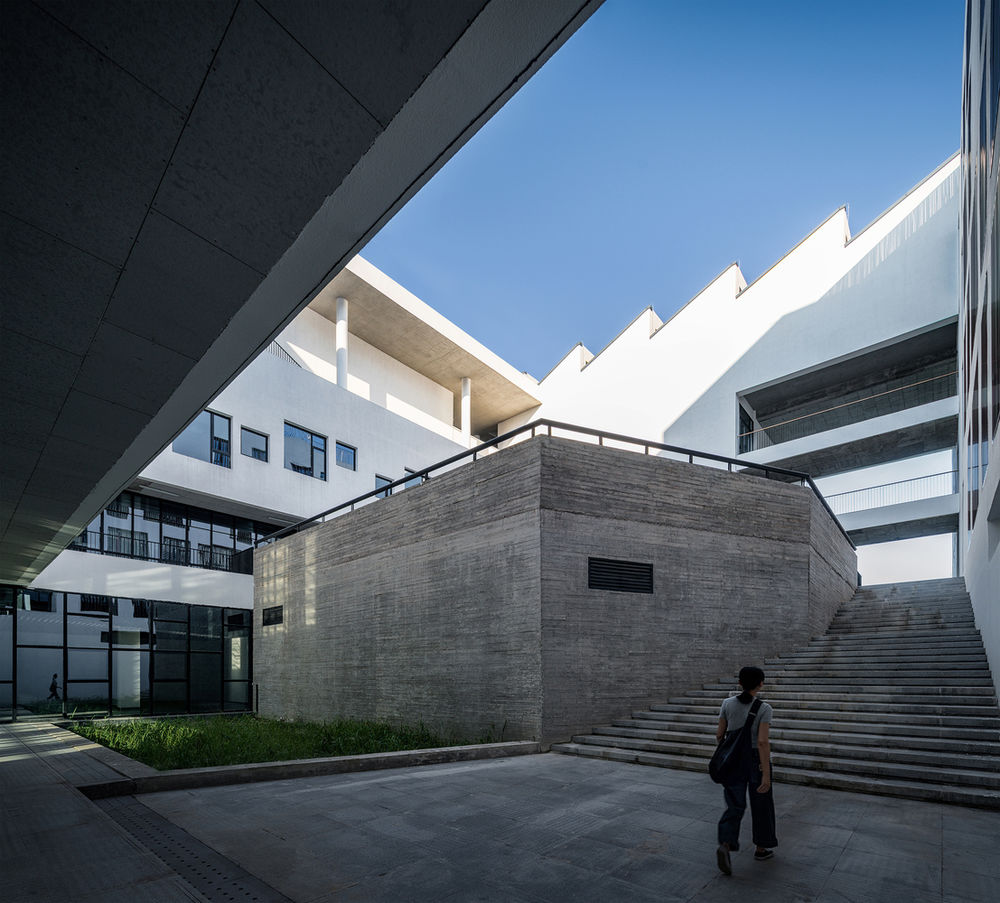
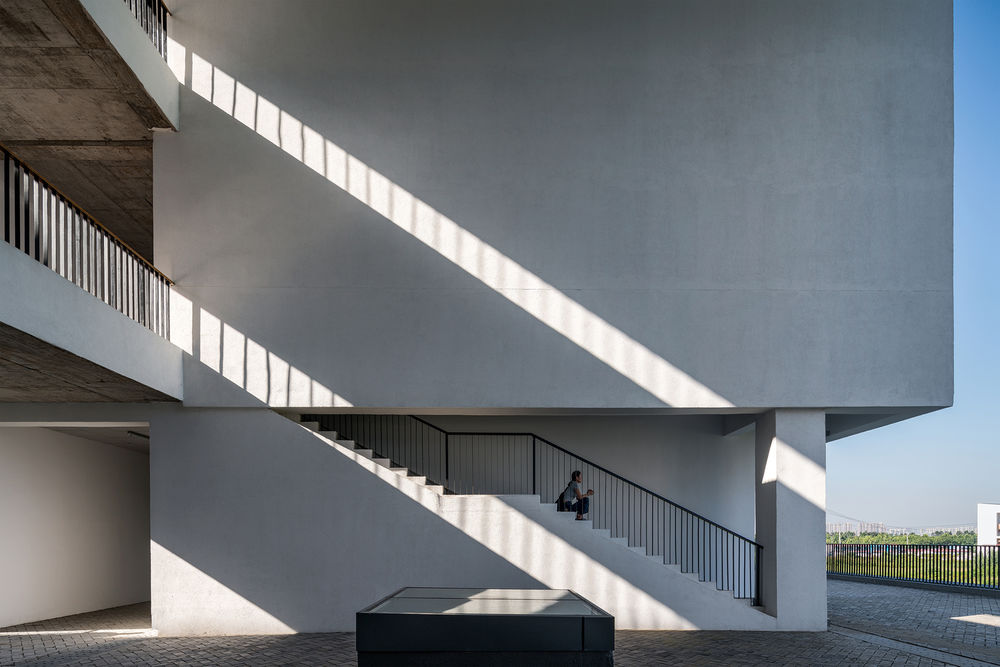
Spatial SequenceA series of relaxing space are created: walking through the entrance hall, you step into the horizontally unfolded 1st-floor courtyard enclosed by the concrete wall of the lecture hall, which blocks your sight like a traditional screen wall; the outdoor steps on one side imply the extension of the courtyard in both horizontal and vertical dimensions;
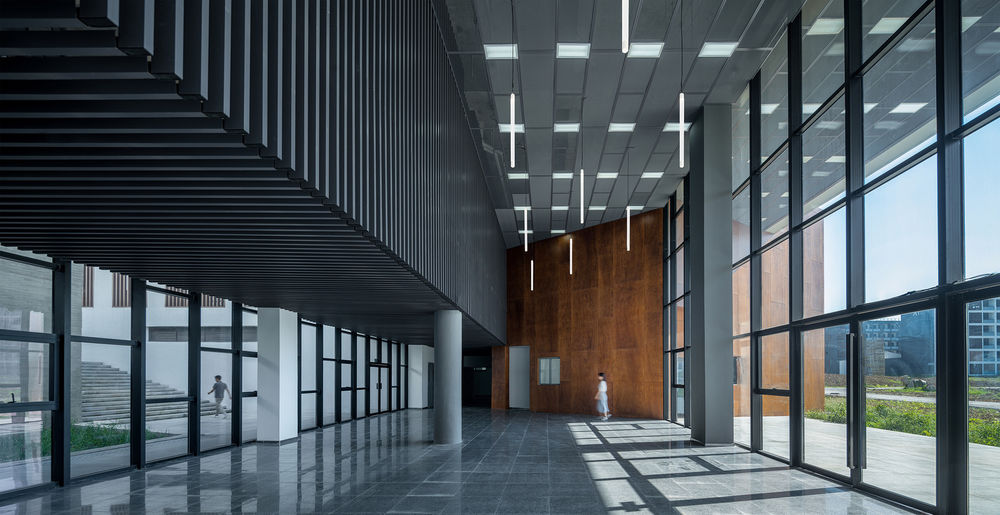
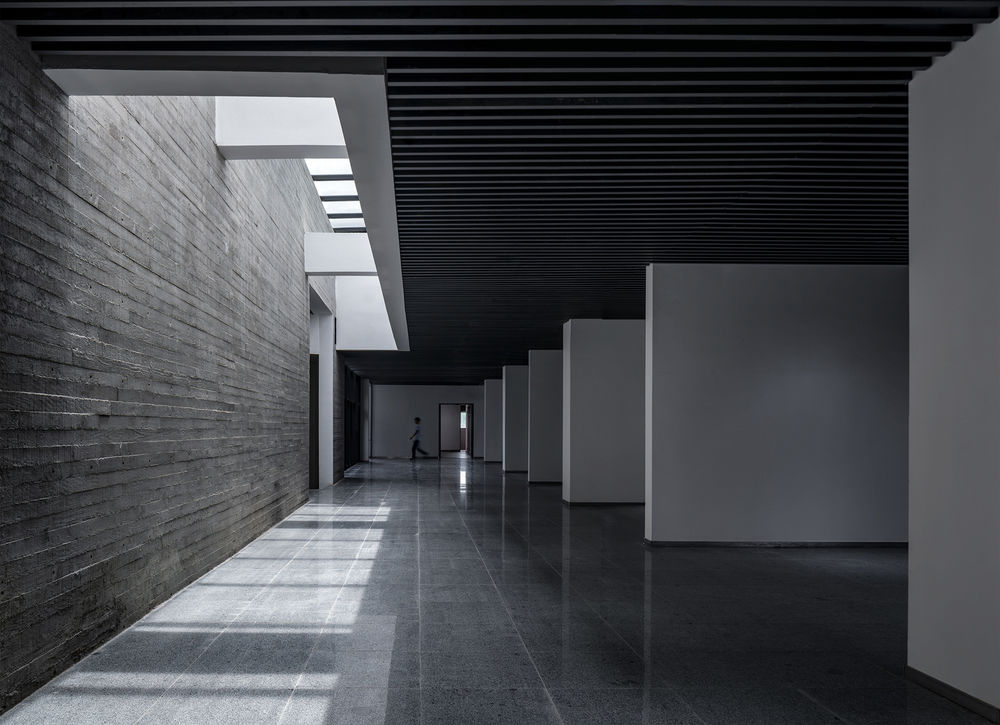
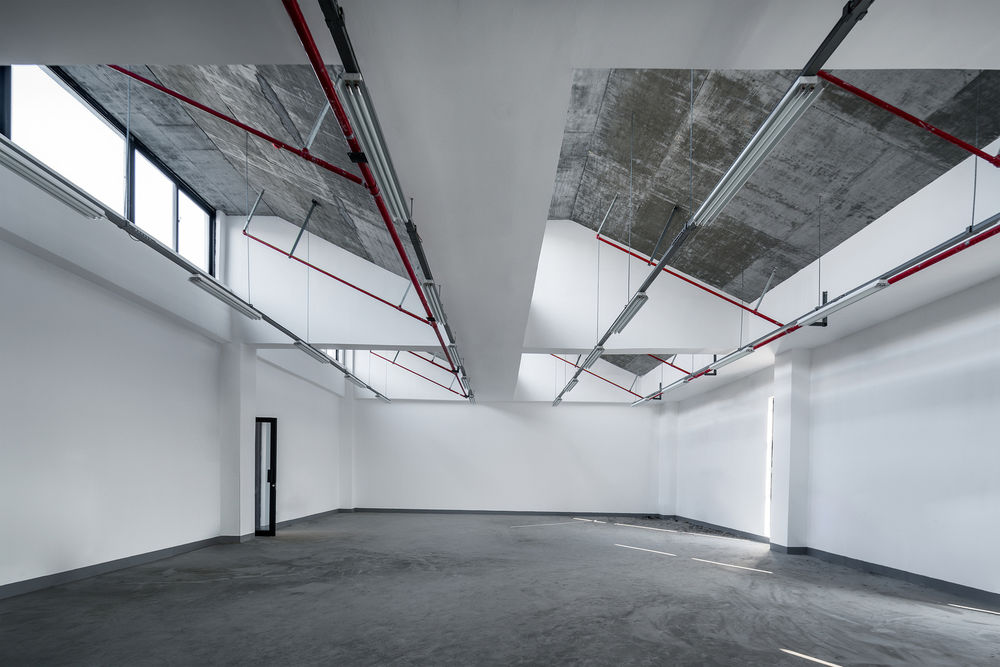
The steps are deliberately narrowed and the scales are gradually reduced along the textured concrete wall while the view opens up.When coming up to the 2nd-floor terrace, you can see the distant buildings through a huge three-storey-high opening.Passing through the opening to the side of the terrace, you will be greeted by a panoramic view.
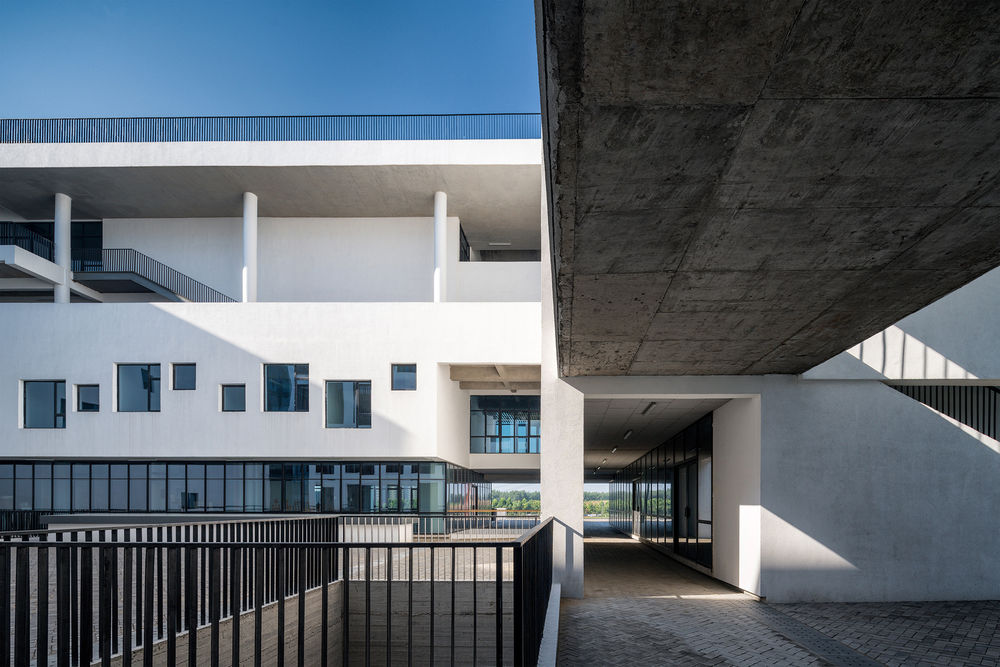
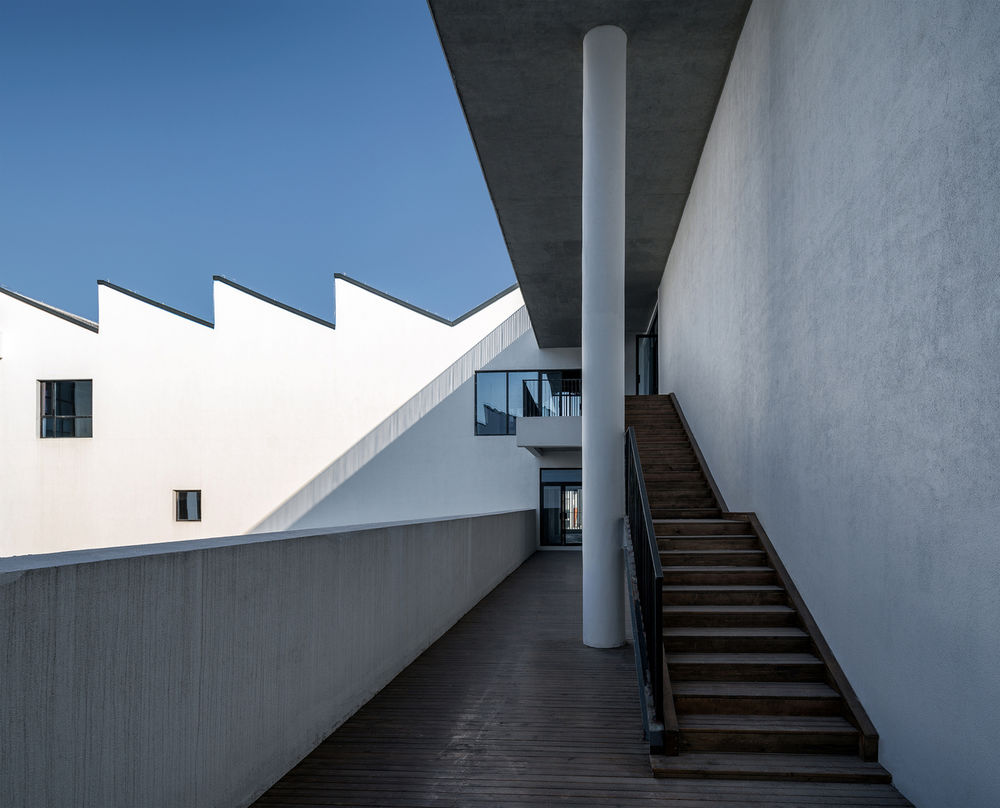
Materiels and the RoofUsing traditional or modern materials, such as horizontal wood graining concrete, wood veneer, aluminium alloy grille, grey brick and Chinese-style blue tiles, along with white-toned building to echo traditional Hui-style architecture, which are featured in white walls and black tiles. Zigzag-shaped north-facing sloped skylights fill the studios with soft light, as well create architectural characteristics.
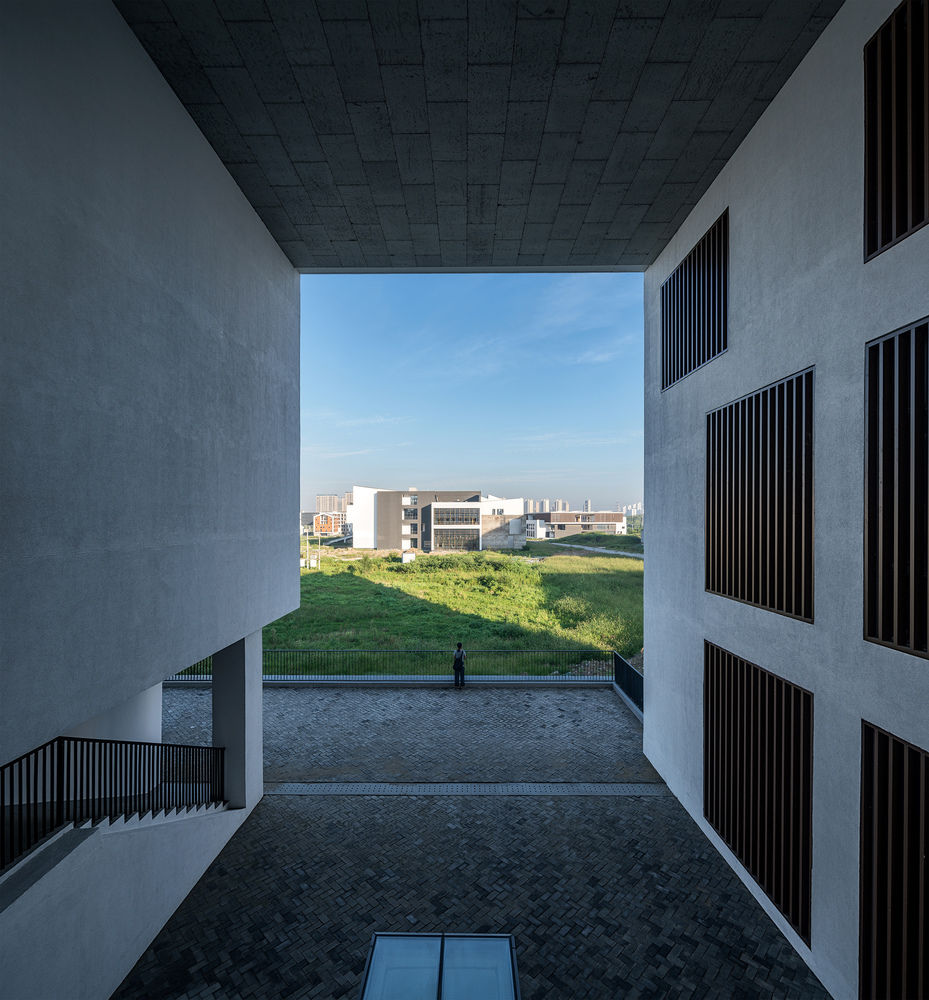
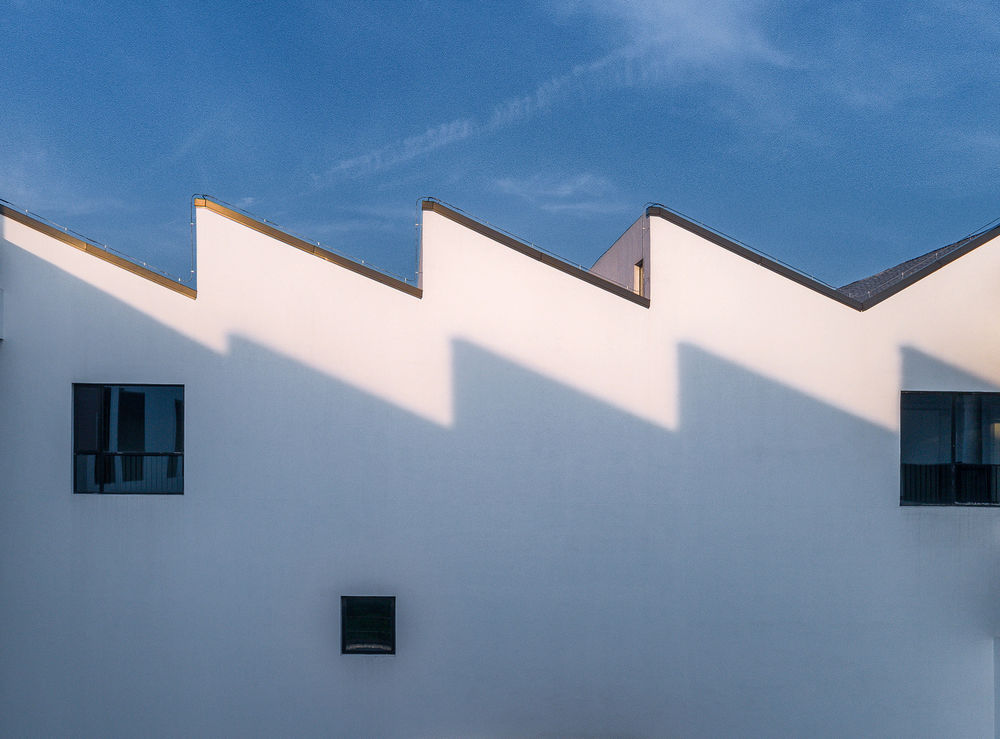
▼项目更多图片

